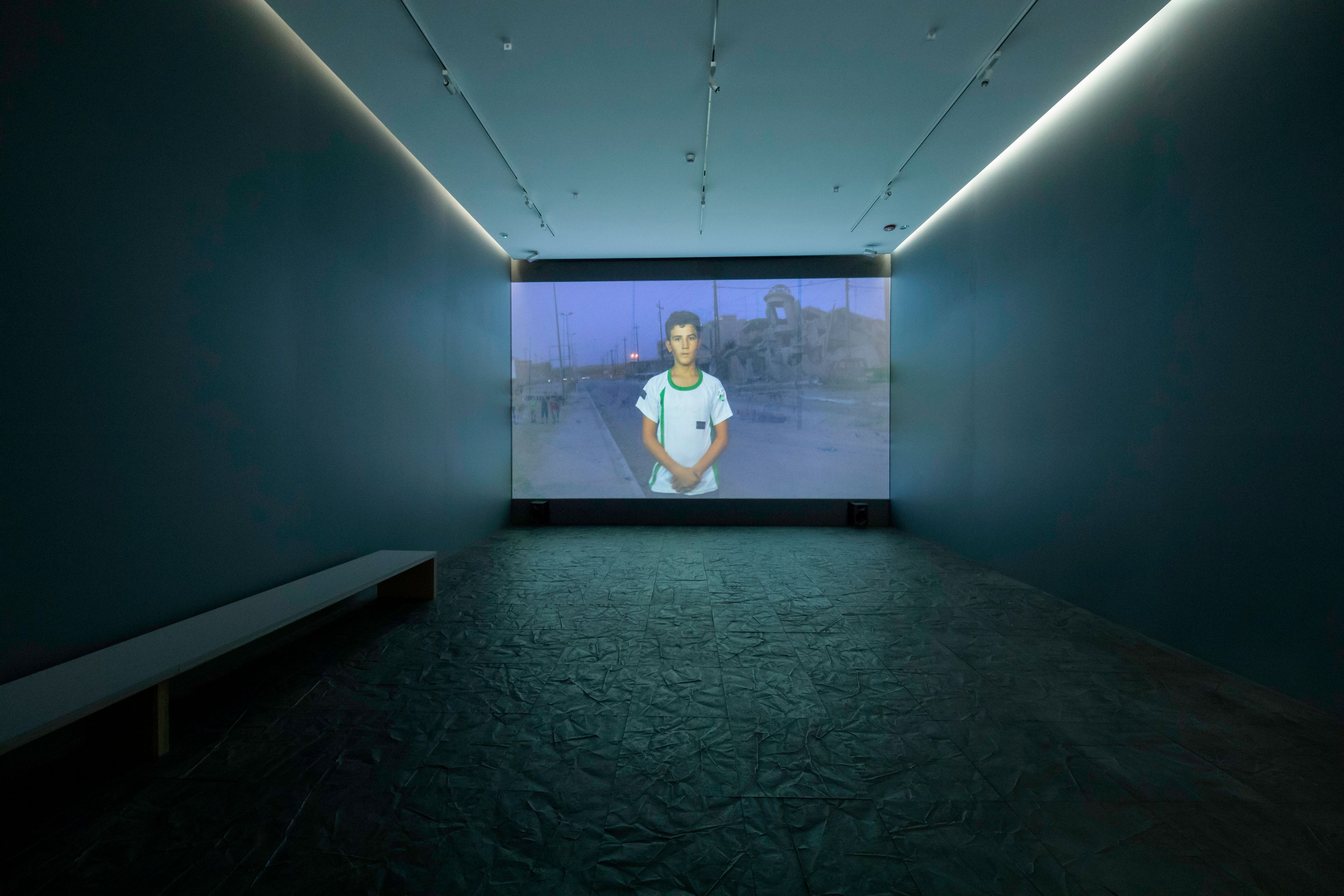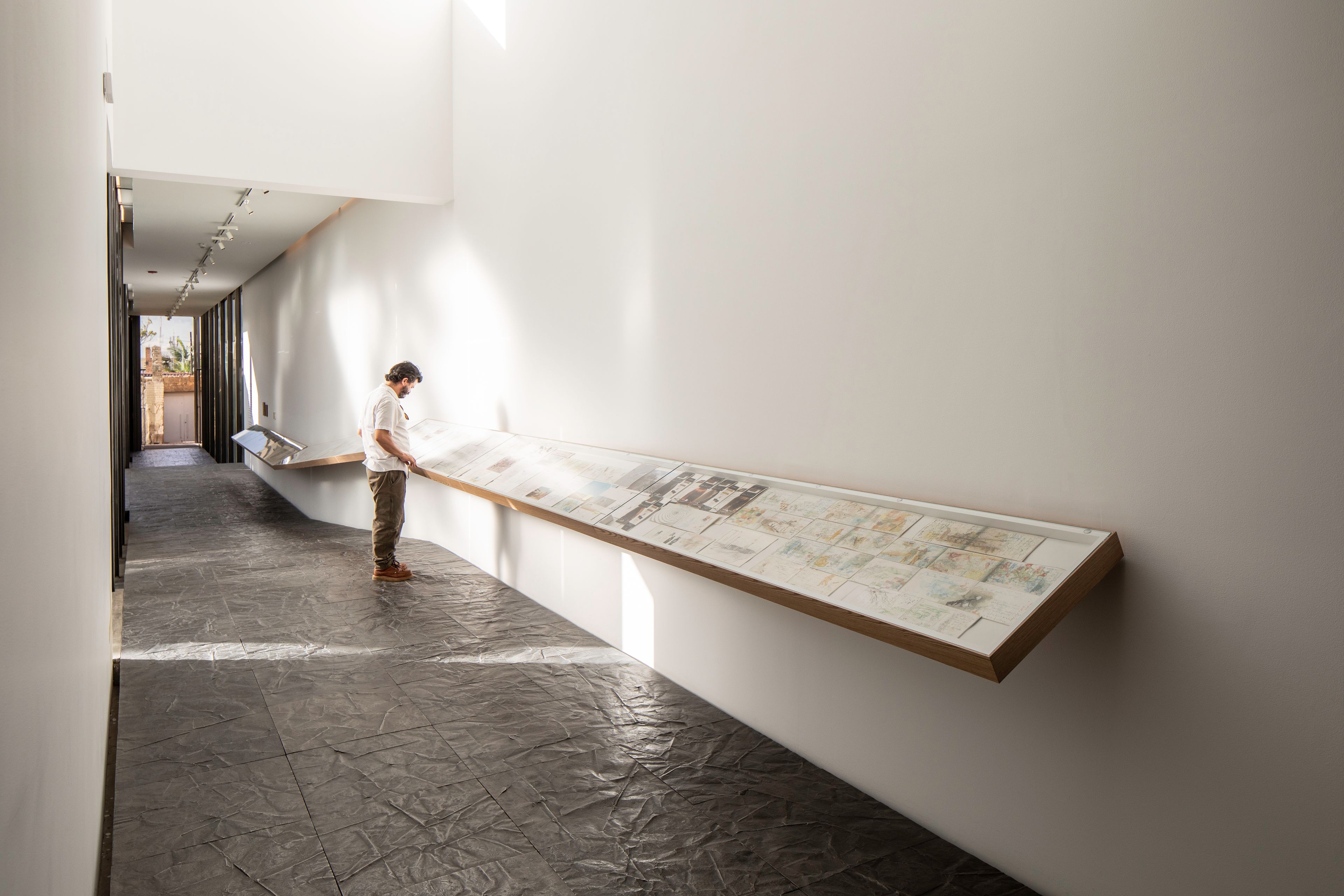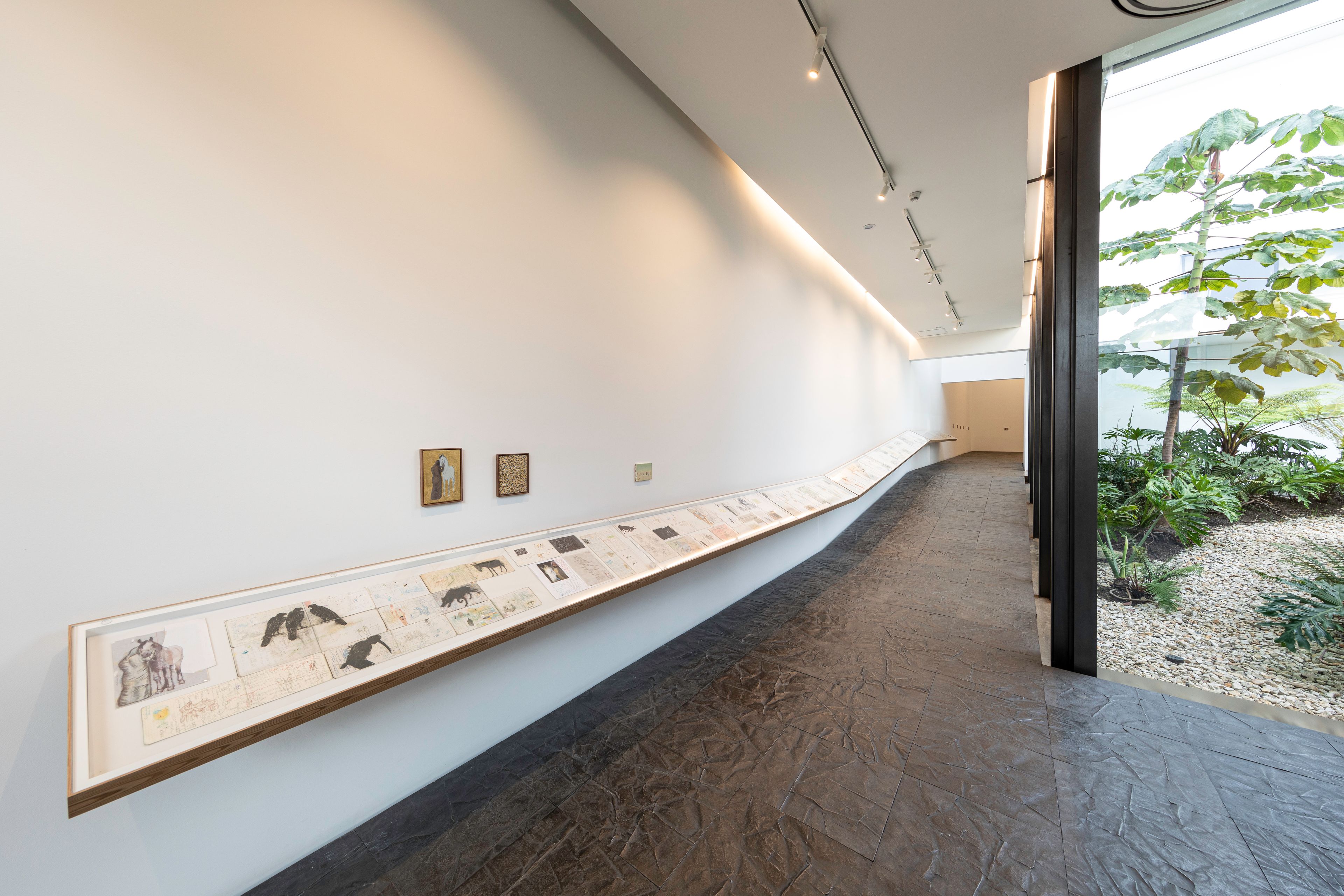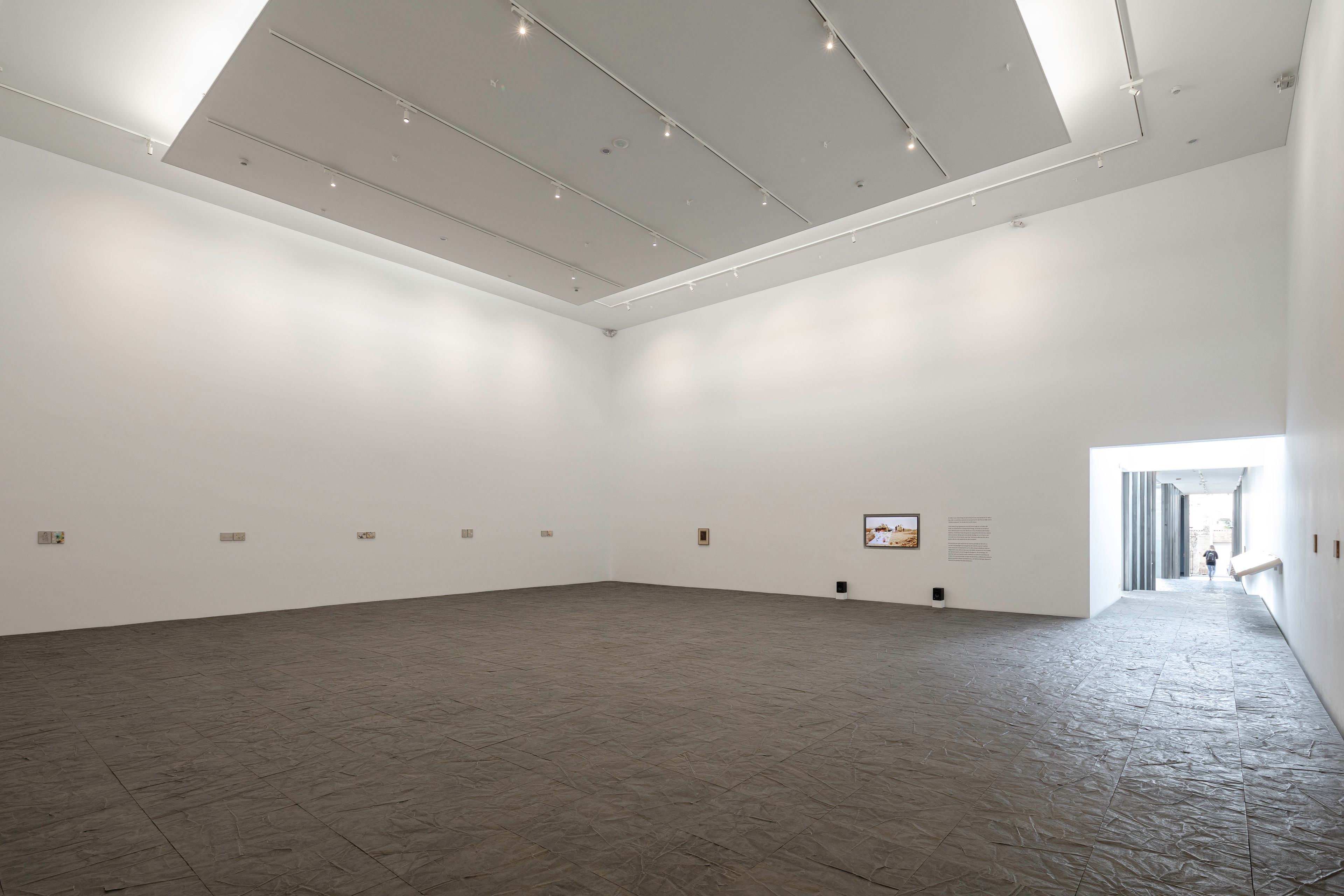Fragmentos, Espacio de Arte y Memoria, Museo Nacional de Colombia, Bogotá
2020
November 26, 2020–May 30, 2021
The exhibition Francis Alÿs: Salam Tristesse, Iraq, 2016-2020 presented a sample of the work that Francis Alÿs developed between 2016 and 2020 as a war artist in Iraq. In this exhibition, Alÿs explores social collapse, the absence of meaning and the drama caused by war, while, with great clarity about his own work, questioning the role and prerogatives of the artist who documents this warlike confrontation. Indeed, in Alÿs’s work the question constantly arises as to what to do in the face of injustice and the pain of others. The exhibition, which transits between multiple languages and forms of expression, was made up of the audiovisual pieces Haram Football, Salam Tristesse, Wada’an Tristesse, and Color Matching, as well as other paintings, drawings, interventions on paper and in photography, in addition to different archival material that allows the viewer to get closer to the creative process of the artist in the different projects he carried out in Iraq. Alÿs arrived in Iraq with the intention of documenting the forced displacement of the civilian population caused by the Kurdish-Iraqi military offensive against the Islamic State (ISIS). In addition to accompanying the Kurdish army Peshmerga for a few days, in their offensive to liberate the city of Mosul, he visited different cities, towns and refugee camps. More than witnessing the arduous living conditions in those places, Alÿs documents the survival strategies that people develop in the face of the collapse of the social and symbolic order caused by war. Faced with a reality dominated by terror, Alÿs shuns any attempt at representation. He does not limit himself to the denunciation that moves to compassion. Rather, he tries to offer a serene point of view that questions the viewer about his own story and the reality that surrounds him. Alÿs does not claim that art can reveal the hidden reality of things, much less remedy the evils of the world. In his own words, “perhaps our job is only to offer a different perspective on a given situation,” since “sometimes the absurdity of the artistic operation is needed to introduce a little sense into a situation that seems to have stopped making sense.”





